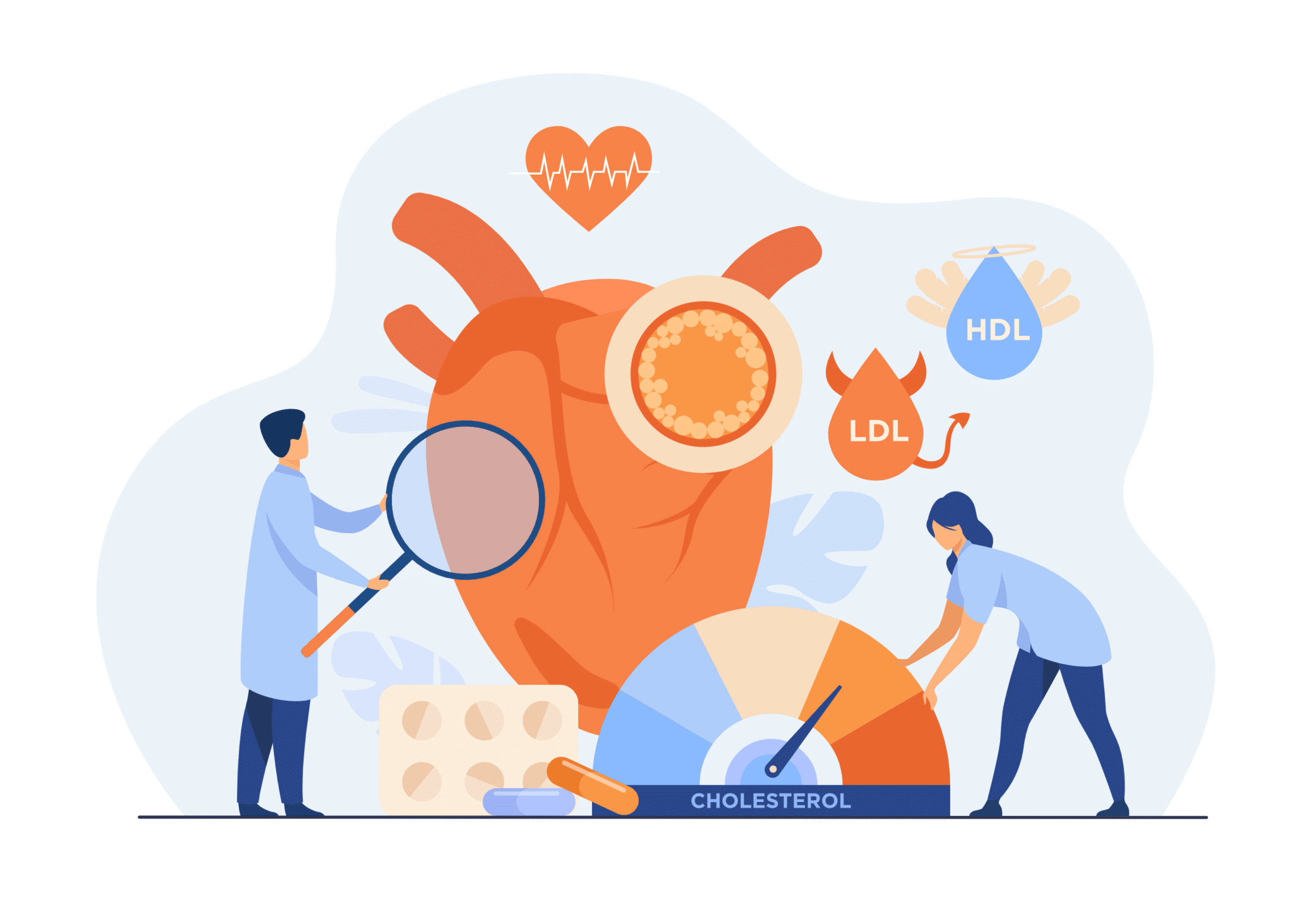
Nearly 1 in 3 Americans has high cholesterol levels, which can lead to heart disease. Heart disease is the leading cause of death in the U.S.
But what is cholesterol? And more importantly, what causes bad cholesterol, and what can you do to keep your cholesterol levels and heart healthy? In this article, we will try and throw some light on the topic.
What Is Cholesterol?
Cholesterol is a waxy organic molecule that is essential for creating healthy cells and hormones in the body. Our liver and intestines produce most of the cholesterol in our body, with the remaining amount coming from our diet and other factors.
Why Should I care?
Cholesterol is a lipid molecule. It can’t be exercised off, sweated out or burned for energy like fat. Too much Cholesterol in the body is a bad thing, but a healthy cholesterol level is an important part of cell regeneration and maintaining a healthy metabolism of the body. That is why it is important for everyone to know about cholesterol management in order to maintain a healthy lifestyle for prolonged wellness.
Good vs. Bad Cholesterol
If you have ever taken a cholesterol test, you would have noticed that your doctor measures the level of ‘lipoprotein’ in your blood. Two specific lipoproteins, called HDL (high-density lipoprotein) cholesterol and LDL (low-density lipoprotein) cholesterol, are what are generally referred to as “good cholesterol” and “bad cholesterol”.
LDL is referred to as “bad cholesterol.” It is the major carrier of cholesterol in the body. When the body has too much LDL, the molecules are consumed by cells called macrophages that get trapped inside the walls of your blood vessels. This leads to cholesterol plaque buildup, which is known to be the main cause of heart attacks and strokes.
Meanwhile, HDL removes cholesterol from the body by carrying it from the cells back to the liver. The liver then uses that cholesterol to make bile or other essential tissues. So, the higher your HDL levels are, the less plaque buildup you have. This is why HDL is considered “good cholesterol.”
What Causes High Cholesterol?
While most people blame diet and/or lack of exercise as the main cause for high cholesterol, there are many things that can cause high LDL levels (or low HDL levels). Sometimes it’s not related to diet at all and is instead due to genetics. For example, familial hypercholesterolemia is a genetic disorder that makes it difficult for the body to remove LDL from the blood. According to the CDC, about 1 in 250 people have this condition, which puts them at risk for heart attacks and strokes at an early age.
However, as noted earlier, there are many things that can increase your cholesterol levels, putting your heart at risk. Genetic conditions are only one factor – diet, exercise, smoking, and drinking alcohol all play a role. Obesity and poor lifestyle choices can lead to liver disease, diabetes, high blood pressure, thyroid disease, and kidney and adrenal gland issues.
What Is the Ideal Level of Cholesterol?
When it comes to cholesterol levels, less than 200 is considered healthy for adults, while anything in the 200-250 range is considered moderately elevated. Levels above 250 are highly elevated.
HDL levels, or the “good” cholesterol, should be 60 or higher in an adult, but this is uncommon. Most patients have HDL levels in the 40s and 50s. LDL levels, or the “bad” cholesterol, should ideally be below 100, but anything below 70 is best.
How to Control Cholesterol Levels
While it is true that many cases of high cholesterol are caused by genetics, luckily, in most cases, you can lower your cholesterol by making a few changes to your lifestyle. Here is what experts suggest in order to maintain a healthy cholesterol level –
- Eat More – This doesn’t mean eat more processed, unhealthy food. It means you should cut out processed foods altogether and replace them with healthy, nourishing foods that help your body function. Vegetables such as okra, leafy greens like spinach, eggplant, and sweet potatoes are good for maintaining healthy LDL and HDL levels in the body.
Similarly, fruits such as apples, grapes, strawberries, and citrus fruits also help maintain cholesterol levels. Including food high in omega 3s like salmon or flax seeds and foods with a high volume of soluble fibre like oatmeal, beans, and other whole grain food items also helps maintain a healthy cholesterol balance.
- Work Out – As kids, we all loved to run around and play outside, and as adults, we can recapture that feeling by finding activities that give us a thrill. Working out with a buddy can make exercise fun again. Especially exercises like dancing, swimming, yoga, tai chi, walking, cycling, etc, can be made more fun with a companion joining you in on the action.
Vary your routine between aerobic exercises, strengthening with weights, and stretching to keep your body limber and fit. Exercise is also a great way to let go of stress and elevate your mood. - Stay Relaxed – Stress hormones like adrenaline and cortisol raise your levels of fatty acids and triglycerides, which can increase your LDL levels. If you feel stressed out, try some relaxation techniques like:
- Meditation
- Prayer
- Deep breathing
- Exercising
- Talking to a friend
- Talk therapy
Make sure you take some time for yourself every day to minimize the effects of stress.
- Drink Moderately – Red wine and other types of alcohol may have some benefits for your heart health, but you shouldn’t try to use them to lower your cholesterol. Drinking more than a moderate amount of alcohol can raise your risk for cancer and other diseases. If you’re a woman or a man over the age of 65, limit yourself to one drink per day, and two if you’re a man under 65.
- No Smoking – There are many benefits to quitting smoking, one of which is that your HDL cholesterol (“good” cholesterol) levels rise. HDL helps remove LDL from your bloodstream, keeping your blood vessels and heart healthier. Within a year of quitting smoking, your risk of developing heart disease is cut in half.
- Cut Down on Salt – Salt has been known as a valuable resource for centuries. The Romans used it to pay their soldiers, and the word “salary” is derived from “salt.” Today, salt can be bought cheaply, but using too much of it isn’t healthy. You can reduce your salt intake by cutting out processed foods and junk food.
- Choose the Right Fat – While the human body cells need good-quality fats to function optimally, eating too much fat, or the wrong kinds of fat, negatively impacts cholesterol levels. For instance, trans fats increase LDL levels. Trans fats are found in most processed and junk foods, typically in the form of “hydrogenated oil.” Avoid unhealthy fats, such as those found in processed foods or red meat. Other sources of unhealthy fat include fast food and dairy products. But instead of avoiding all fats, focus on good fats, like olive oil or sunflower oil. You can also get good fats from nuts and fatty fish.
If your cholesterol levels are too high, our doctors at CVCFL may also recommend medication to lower your LDL. To find out more about how to lower your cholesterol, call us today at +1 352-633-1966 or request an appointment online.


